An amendment numbered 174 printed in the Congressional Record to prohibit the use of funds for the Yucca Mountain Nuclear Waste Repository.
Millions of tons of low-level material are buried at the Nevada National Security Site — and the state can do little about it
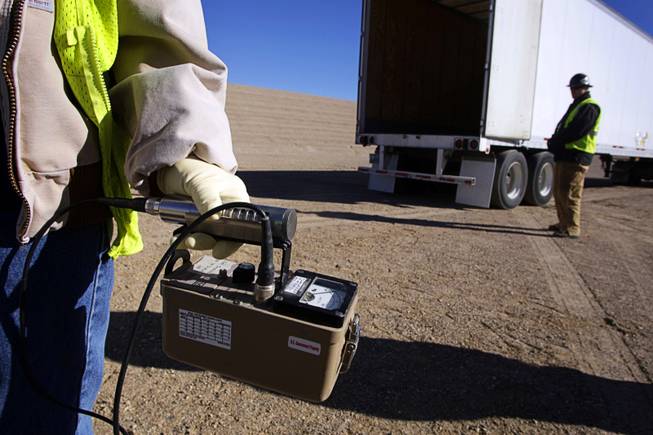
Pam Salvato, a radiation control technician, holds a radiation ratemeter in the Area 5 Radioactive Waste Management Site of the Nevada National Security Site (N2S2), previously the Nevada Test Site, about 65 miles northwest of Las Vegas on Feb. 1, 2011.
Sunday, Feb. 13, 2011 | 2 a.m.
Up the road from Las Vegas, a little-known site houses enough nuclear waste to more than fill New York City’s 102-story Empire State Building or cover a football field to nearly the height of Hoover Dam.
Government officials say the waste poses no threat to public health, except in cases of extreme exposure. Some environmentalists and scientists disagree.
“Low-level waste is a misnomer because it seems to signal to the public that low level equals low risk, but low level does not mean low risk,” said Marylia Kelley, executive director of Tri-Valley CARES, a Livermore, Calif., environmental group focused on nuclear weapons policies. “The whole way we classify nuclear waste needs to be changed.”
But Frank DiSanza, waste management federal project director for the National Security Site, said that even when a truck carrying radioactive concrete debris tipped over in the southern valley, the risk of contamination was virtually nil.
“Somebody would have had to come up and sniff the concrete to come close to inhaling any radioactive contaminants,” he said. “You’d have to get down on your knees and get your face right into it and then inhale. You wouldn’t die immediately. There may be a possibility of a latent cancer 20 to 25 years down the road.”
Soon, there might be clarity on the potential effect of low-level waste in the state.
At the insistence of Nevada Attorney General Catherine Cortez Masto and other state officials, the Energy Department is reviewing how the National Security Site should be used over the next 10 years and whether that use should include nuclear waste disposal. The review will cover the swath of desert, formerly called the Nevada Test Site, that is dotted with shrubbery, scorpions, rabbits and radiation-monitoring devices where nuclear weapons were tested.
What could get the most scrutiny is whether the site should continue to accept radioactive waste from Energy and Defense department facilities, where nuclear weapons were designed and built through the early 1990s. Among questions it raises:
• How dangerous is low-level nuclear waste?
• How reliable is the packaging and transport of the waste?
• What is the possibility that buried waste can contaminate groundwater below the National Security Site?
The Energy Department argues that low-level waste exposure is life threatening only under extreme conditions that would require several unlikely mistakes to occur. When the truck carrying low-level concrete waste to the National Security Site in 2008 rolled on its side on the northbound Interstate 15 ramp to Blue Diamond Road, the waste packages retained their contents and were transferred to another truck.
There have been 15,500 shipments of low-level waste to the National Security Site since 1999. Annual transportation reports by the Energy Department for fiscal 2000 through 2009 showed five truck accidents and dozens of other mishaps, including contaminated trailers, waste packages that were either contaminated or breached, mistakes that occurred while unloading packages, and waste shipment labeling or paperwork errors.
DiSanza said he considered the transportation record to be excellent because no one was killed or seriously injured as a result of the accidents or mishaps, and that no contaminants were released into the environment.
But Vermont physicist Marvin Resnikoff, a nuclear waste expert and adviser to Nevada on Yucca Mountain issues, said: “The more shipments that come to Nevada, the more the likelihood of accidents.”
Shipment of low-level waste, which the Energy Department began accepting from out of state in 1976, is largely under the radar for two reasons. Nevada politicians, the media and environmentalists have focused on the plan to turn Yucca Mountain into a repository for the nation’s deadly high-level waste — spent fuel from commercial nuclear reactors and certain highly radioactive waste from weapons programs.
The other reason: There is virtually nothing the state can do to block those shipments. The Atomic Energy Act gives the Energy Department the authority to manage its waste, including transfer from one facility to another, without state approval.
It’s not that state officials haven’t tried to exert influence. They’ve filed lawsuits to block shipments of radioactive waste they didn’t think was suitable for the National Security Site. They’ve also written letters to the department questioning the extent to which the site should be used for waste disposal.
Their tactics sometimes have worked. Nevada officials in 1997 objected vociferously after shipping mishaps involving waste sent from a former nuclear weapons plant in Fernald, Ohio — one involving a loose container lid and the others dealing with water that leaked from waste storage boxes. Shipments from that plant resumed only after the containers were modified.
The state in 2005 blocked shipment of uranium waste from Fernald that then-Attorney General and current Gov. Brian Sandoval said was too dangerous for disposal at the National Security Site. The waste was shipped to a site in Texas.
But Nevada politicians have stopped short of advocating a ban on waste shipments because they support the National Security Site’s defense mission and are reluctant to do anything that might be perceived as disrupting that mission.
“Years ago, the state looked into this pretty carefully,” said Joe Strolin, acting director of the Nevada Agency for Nuclear Projects, which has waged the state’s fight against Yucca Mountain. “What we found is that there was no good legal ground for us to oppose this. It had been going on for a long time, so we didn’t think there was a way we could stop it.”
Chief Deputy Attorney General Marta Adams said that when the Energy Department’s draft environmental impact statement for the National Security Site is released for comment, which is expected in April, the state may review whether it has legal standing to challenge the disposal of nuclear waste.
As for the chances of such a challenge succeeding, she said: “It is possible but I’m not sure it’s probable.”
If waste disposal is allowed to continue, the next key date won’t be until 2027, when the site is scheduled to have cleaned up its own waste, which it has disposed of on-site for a half-century. The Energy Department could decide to close the waste site or keep it open for shipments from out of state.
•••
Low-level nuclear waste isn’t your typical garbage. The inventory includes reactor equipment and water-treatment residues, soiled clothing, filters, rags, tools and construction debris. The site accepts mixed low-level waste that combines radioactivity with other hazardous chemicals. High-level waste is considered more dangerous because it decays so slowly and contains more radioactivity, but low-level waste can contain the same radioactive substances, the Government Accountability Office, the investigative arm of Congress, reported in 1998. It quoted one study that found low-level waste contains cesium 137, a product of nuclear fission that could kill someone standing three feet away in 20 minutes.
Environmental groups complain that low-level waste contains such a broad range of radioactivity — divided into three classes by the Nuclear Regulatory Commission — that the term needs to be redefined.
“Low-level does not mean low hazard,” Resnikoff said. “If you’re a football field away from an accident, that would not be harmful. But if the material got out of a container, everyone in that area would have to be evacuated, and it would have to be cleaned up. The first responders or anyone else near the material could get exposed.”
The commission said in a brochure on nuclear waste that the degree of danger depends on the type and concentration of radioactive material.
“Low-level waste containing some radioactive materials used in medical research, for example, is not particularly hazardous unless inhaled or consumed, and a person can stand near it without shielding,” the commission said. “Low-level waste from processing water at a reactor, on the other hand, may be quite hazardous. For example, low-level waste could cause exposures that could lead to death or an increased risk of cancer.”
But Senate Majority Leader Harry Reid, the Nevada Democrat who has led the effort to derail the Yucca Mountain plan while staunchly defending the National Security Site mission, sees a big difference between high-level and low-level waste.
“There are no comparisons to be drawn between low-level waste and high-level waste as the dangers to both public health and the environment are not remotely comparable,” Reid spokesman Zac Petkanas said. “However, Sen. Reid believes that storing low-level waste should remain only a small part of the work done at the Nevada National Security Site.
“High-level waste, including spent fuel from nuclear reactors, is dangerous beyond 10,000 years and the National Academies of Science has advised EPA (Environmental Protection Agency) to create a radiation protection standard for 1 million years. Low-level waste, while radioactive, can be stored in NRC or state-licensed landfills.”
Another difference between high-level and low-level waste, DiSanza said, is that an individual would need thick concrete or stainless steel to be protected from high-level radiation. “But with low-level waste, the protection could be as simple as a piece of paper, and the alpha particles don’t even penetrate your skin,” he said. “That’s not to say there aren’t dangers associated with it. But they’re very easily controlled.”
•••
As the Sun accompanied Energy Department officials to the National Security Site, agency spokesman Darwin Morgan of the Nevada site office pointed to a truck heading north on U.S. 95 beyond Ann Road.
“Did you see that truck?” Morgan said. “It’s carrying explosives. But that doesn’t seem to be as big of an issue for people here in Las Vegas. There are a wide variety of Department of Transportation-approved materials coming through town that would instantly cause death.”
Morgan’s argument is that there is less danger to the public from transport of low-level nuclear waste than from shipment of “chlorine, paints and chemicals.” The biggest danger of hauling low-level waste, he said, is “if a package falls from the back of a truck onto a car and kills the person in the car.”
Still, that did not stop Gov. Kenny Guinn from meeting with Energy Secretary Bill Richardson in 2000 to express concerns about the transport of low-level waste through heavily populated areas in Southern Nevada. Guinn highlighted shipments in the Spaghetti Bowl where I-15 and U.S. 95 meet. Richardson, too, recognized that trucks were at greater risk of getting into accidents there because of the congestion.
So he got his department to warn waste generators not to use the Spaghetti Bowl if they wanted to continue sending waste to Nevada. For the most part, they complied, although 13 truckloads passed through the Spaghetti Bowl in 2001 and 2002.
When two shipments passed through it in November 2006 from the Savannah River Site, an Energy Department facility in South Carolina, the facility was required by the agency to take corrective action. It also ordered another waste generator to correct its transportation plan after sending a truck through the Spaghetti Bowl in 2009.
Hoover Dam also was crossed off transit routes after the 9/11 attacks, and the Energy Department has never authorized use of the Las Vegas Beltway, although twice in 2004 and once in 2007 that highway was used.
Today, the closest the waste is allowed near Las Vegas is on Blue Diamond Road (State Route 160) in the southern valley. Over the past decade, that road has witnessed tremendous residential and commercial growth. Yet Strolin said the state can’t take it off the table because of a compromise with California, whose State Route 127 through Death Valley is also used to haul waste to the National Security Site from the south. California and Nevada have agreed to a split schedule that allows for waste transports along both routes.
“Our preference is that they don’t use Route 160,” Strolin said of the waste transporters. “The preferred route is to use California Route 127. But California has objected to having a lot of the shipments going on 127 because of concerns that it will set a precedent for use should the Yucca Mountain project go forward. California is nervous about high-level waste.”
A citizens advisory panel that reviews safety issues at the National Security Site urged the Energy Department to review use of Blue Diamond Road. But DiSanza said a transportation expert found in 2009 that public exposure to radiation along that route was less than one-millionth of a millirem, a fraction of the one millirem limit he said the Environmental Protection Agency considers safe. The agency estimates that the average American gets a dose of about 360 millirem a year, most of it from radon in the air, and some from man-made sources such as X-rays.
Outside the valley, waste that enters Nevada goes through rural communities such as Amargosa Valley, Beatty, Ely, Goldfield, Pahrump, Tonopah and Searchlight.
Transport of low-level waste isn’t perfect, Kelley of Tri-Valley CARES said, because at many Energy Department facilities “there’s still more emphasis on nuclear weapons research and too little emphasis on the security and safe disposal of nuclear waste. They get less money and staffing for that.”
But DiSanza said the technicians who package the waste where it is generated are well-trained. A 50-cent-per-cubic-foot surcharge on waste shipments has raised more than $10 million to equip emergency personnel statewide.
If accidents occur, cleanup or other corrective action is the responsibility of the trucking company that hauls the waste.
When the Energy Department discovers packaging mistakes, waste generators are ordered to correct them before they can ship more waste. Problems with the waste packages mostly involve condensation that builds up inside trucks during cross-country journeys, DiSanza said.
“This water can and has made its way out of the containers,” he said. “But there really hasn’t been any contaminants in that liquid. We follow all the procedures to alert the state of Nevada and then we go through a series of lessons learned to make sure we don’t repeat that type of mistake.”
As for the packages, DiSanza said, “there’s always room for improvement and the generators are always willing to not only improve the containers, they’re willing to be more efficient in selecting and utilizing the containers to ship the waste to our site.”
•••
Follow the winding road off U.S. 95 past the National Security Site gate, go about 15 miles into a desert valley and you reach several buildings surrounded by earth-moving equipment and 38 earthen disposal cells, including 11 in use.
The 740-acre Radioactive Waste Management Site on the western edge of the site is in Area 5, a place where nuclear weapons were detonated. Although waste has also been buried in craters in Area 3 to the north that were created by nuclear blasts, the Area 5 disposal cells are the only ones in use.
With an annual budget of $22 million, 55 people work on-site and 30 others off-site, including planners and engineers.
Operating from 7 a.m. to 5 p.m. Monday through Thursday, the site is open for business to trucks on a first-come, first-serve basis, resulting in many lining up outside the gate waiting their turn. A busy shift could see the arrival of more than 40 truckloads.
Trucks are greeted by workers wearing safety hats, glasses, vests, gloves and shoes, not the space outfits of science-fiction movies.
The Sun followed an 18-wheel truck carrying mixed low-level waste containing toxic PCBs. The truck first went through an exterior inspection where an instrument was used to measure radiation. The truck passed inspection but if it hadn’t, it would have undergone more thorough examination to determine the cause of the high radiation readings.
The truck was directed to a mixed-waste cell that opened Jan. 26. Three hundred feet long, 180 feet wide and 27 feet deep, the cell is practically large enough to insert a football field with bleachers. It is the only cell that requires a permit from the Nevada Environmental Protection Division because it accepts radioactive waste with hazardous chemicals.
Once inside, the truck’s contents — four large metal containers — were gauged for exterior contamination as was the floor of the trailer. Samples of these readings are taken to an on-site laboratory to make sure there are no abnormalities. A forklift retrieves the waste packages and lines them up with others.
“Sometimes a shipment is rejected, and it’s sent back to the shipper,” DiSanza said. “We have a no-tolerance policy. We may ask the generator to come to our site and devise a method to repackage a container. Usually it’s put in a bag and wrapped and put on the truck and sent back. There have been many times when the trailer couldn’t be released.
“I’m guessing there are two or three a year where we’ll find contamination on the floor of the trailer. Most of these trailers have wooden-plank flooring that we can cut out. We’ll either keep the contaminated flooring or send it back to the generator.”
Over time the waste containers will be stacked atop each other, and the cell, once it reaches capacity, will be capped with dirt and vegetation.
•••
One thing that makes this cell unique is that it’s the only one with a double synthetic liner to meet the standards of a new state law covering hazardous waste disposal.
The fact that all other cells, including one that handles classified waste from the Defense Department, don’t have linings is a sore spot with environmentalists because of groundwater below the waste. They fear the waste could further contaminate underground aquifers.
The Energy Department estimates that underground nuclear testing contaminated nearly 124 billion gallons of groundwater, five-hundredths of 1 percent of the estimated water volume beneath the National Security Site. A study for Nye County, though, estimated contamination of as much as 1.6 trillion gallons.
Republican Assemblyman Ed Goedhart is among the skeptics who think that the buried waste will contribute to groundwater pollution if it hasn’t yet done so. The dairy farmer from Amargosa Valley, south of the National Security Site, wants the Legislature to approve a resolution urging the federal government to provide restitution to the state and Nye County for groundwater contamination.
“It’s not a question of if the waste will also pollute the groundwater, but when,” Goedhart said. “Yucca Mountain has been distracting people from the continuous dumping of low-level waste in Nevada. But the people out here feel there’s not much we can do because the federal government is so powerful. They’re just playing us all for fools, and they’re giving us nothing back.”
Goedhart may have reason to be concerned. A study last year by the U.S. Geological Survey of groundwater at the National Security Site found it drains in a south/southwest direction toward Ash Meadows in Amargosa Valley and beyond to Death Valley.
The Energy Department, which monitors the groundwater, says it’s confident its unlined waste trenches prevent radioactivity from leaching down to the top layer of aquifers 700 to 1,700 feet below the surface. The probabilities, DiSanza said, are “extremely, extremely low” because the area gets only five inches of rainfall annually, not enough to drive the radiation deep below the thick sediment and volcanic rock under the disposal site. DiSanza isn’t sold on the usefulness of linings for low-level waste cells, saying they might not last as long as the radioactivity in the waste or they might trap water, which could actually force the waste toward groundwater. “I say we have 700 feet of natural alluvial lining,” he said.
Vinson Guthreau, spokesman for the state Environmental Protection Division, said his agency hasn’t found evidence of waste dump seepage affecting groundwater. “Unlined doesn’t mean unsafe,” Guthreau said, adding that federal law requires the Energy Department to make sure that radioactivity doesn’t migrate from the dumps.
But Diane D’Arrigo, radioactive waste project director for the Nuclear Information and Resource Service in Takoma Park, Md., an advocacy group opposed to nuclear power, said the Energy Department doesn’t line its low-level waste pits because it wants to save money.
“It’s what they’ve done since the beginning of the atomic age,” she said. “They stick it in a ditch, and they’re done with it. What would make more sense is to containerize it in a way where we’re not leaving it in leaky trenches and ditches for future generations.”
Strolin said the state “has always had concerns” about the possibility the waste would seep into groundwater.
“The Department of Energy has always assured us that the water table is so deep and that any seepage would be so slow it would take thousands of years to reach the water table,” he said. “We say the jury is still out on that.”
Years ago there were fears about potential groundwater contamination from nuclear waste that was stored in unlined trenches at a commercial low-level waste site in Beatty, up the road from the National Security Site. That site was closed by the state in 1993 in a dispute with operator US Ecology over hazardous waste disposal fees.
When the U.S. Geological Survey conducted underground tests near the dump in 1994, scientists taking gas samples found radioactive tritium 357 feet below the surface, not far from an aquifer. That the radiation had traveled to such a depth in just 30 years caught them by surprise.
Scientist David Prudic, who helped conduct the tests and is now an adjunct professor at UNR, said his latest readings in 2003 showed the radioactive levels had tapered off. Still, he said it is possible radioactive gases from the shuttered dump could reach groundwater, although it could take decades.
But he’s not convinced that waste at the National Security Site will have much effect on groundwater contamination there.
“I suspect that if there was contamination, it would be very small compared to the tests.”
It was partly over concern about groundwater contamination that Cortez Masto pressed for a new environmental impact statement that covers the National Security Site, neighboring Nellis Air Force Range and Yucca Mountain. She said the document should update groundwater contamination and waste disposal activities from the last study in 1996.
“The full extent of such contamination is only partially understood,” Cortez Masto’s office stated in 2009 remarks about the proposed environmental impact statement.
Her office insisted the Energy Department calculate where contaminated groundwater is likely to flow beyond the National Security Site and over what period of time. The state also wants the department to develop plans to protect people and the environment from contaminated groundwater.
Even if all groundwater contamination is identified, the Energy Department has said there is no known method for getting rid of its radioactivity. If the contamination reaches a drinking water source, it said its only option would be to “coordinate with the state of Nevada to shut down the well and pursue an alternate water supply.”
But Susan Corbett, South Carolina-based chairwoman of the National Sierra Club Nuclear Issues Activist Team, said all doubts about possible groundwater contamination from low-level waste could be removed if the waste was housed above ground, where it could be monitored. If breaches occur, she said they could be addressed there rather than risk the chance that the radioactivity will leach into groundwater. But she conceded that’s a pricey alternative unlikely to occur.
“In some ways, low-level waste is worse because it doesn’t get handled as carefully as high-level waste,” Corbett said. “There’s no good solution to handling this stuff. We’ve created a monster.”
Yucca Mountain: Nuclear Waste in Nevada
Yucca Mountain, located 100 miles northwest of Las Vegas, is the proposed site of a repository to hold the nation's nuclear waste. The U.S. Department of Energy wants to use the mountain to bury 77,000 tons of radioactive waste.
On Feb. 14, 2002, energy secretary Spencer Abraham recommended Yucca Mountain to President George W. Bush for nuclear waste storage. Bush has accepted the recommendation.
Keep up with coverage of the project here and find out more about what it could mean to Las Vegas and Nevada.
|
| 2011 |
Feb 14: Obama budget confirms end of Yucca Mountain project
Feb 02: NRC chairman says Yucca Mountain closeout to include license panel
Jan 27: DOE seeks four-month wait on Yucca Mountain case
Jan 14: EDITORIAL: Yucca Mountain still breathing?
Jan 11: Appeals court to hear arguments in Yucca Mountain lawsuit
Jan 08: South Carolina senator seeks reversal of Yucca Mountain work stoppage
- State says report gives wrong impression about Yucca Mountain safety (9-10-10)
- New solar test zone brightens the future of Las Vegas (7-9-10)
- Solar research facility planned for Nevada Test Site (7-8-2010)
- Former Test Site workers closer to cancer compensation from government (2-11-10)
- Nevada suffers setback in battle over Yucca Mountain (12-15-2010)
- State reveals plan to step up solar energy development (6-4-10)
- Radioactive tritium found off nuclear test site for first time (10-20-09)
- Cold War era radioactive wastes leaving Nevada Test Site (10-29-08)
- Blast from the Past: Nevada Test Site proves a powerful tourist hot spot (9-5-02)
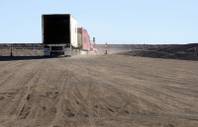
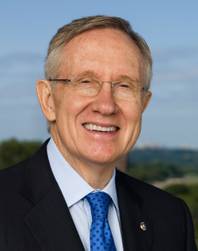
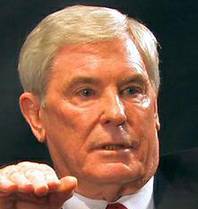
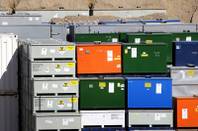
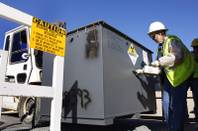
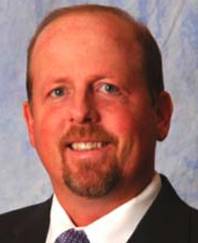
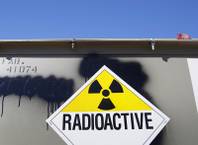
 28 comments
28 comments
